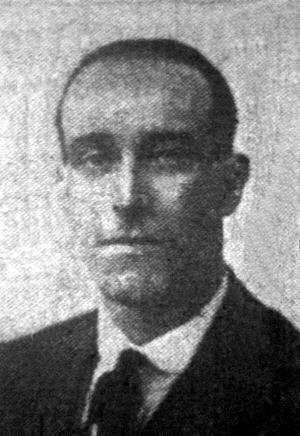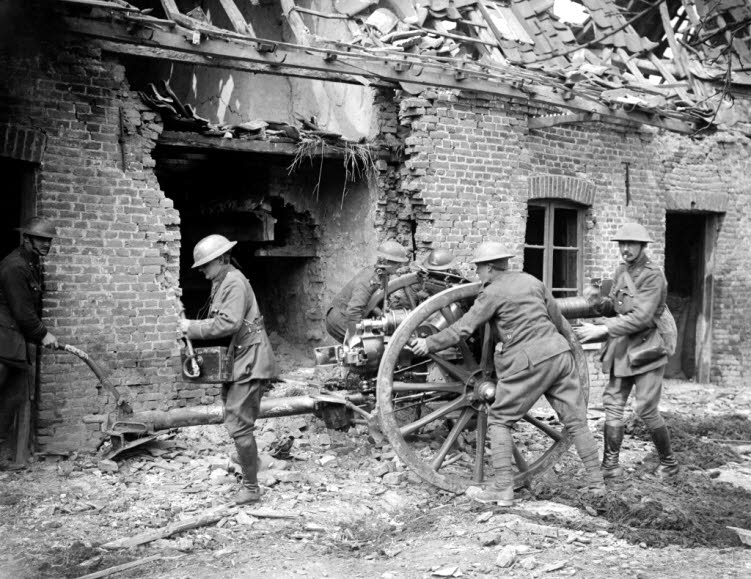
Arthur Todd was born on the 30th October 1888 and baptised at St. Mary’s Church, Mirfield on the 2nd December 1888, the son of John Todd and Jane (nee Marsden), born in Ossett, who had married in 1887 in the Dewsbury Registration District and lived in Mirfield. John Todd was a gardener at ‘Cotewalls’, which was the home of Edward Balme Wheatley, magistrate, landowner and cousin of Charles Wheatley J.P., Ossett colliery owner and landowner.
After the death of his father John Todd in 1893, Arthur was adopted by his uncle and aunt, Charles Wilson and Martha Ellen (nee Marsden), who had married on Boxing Day, 1889 at Christ Church, South Ossett. The couple had a daughter Mary Ellen Wilson who was born in 1894, but no sons. In 1891, Charles Wilson was working as a rag merchant and he and his wife Martha were living at Manor Road at the house of mother-in-law Ellen Marsden.
By 1901, Charles and Martha Wilson and their family of two girls plus their adopted son Arthur Todd were living in Park Square, Ossett and Charles Wilson was working for the Marsden Brothers, Ossett as their agent. Also, in 1901, there is a Jane Todd, who was possibly Arthur’s mother, working as a servant at Rastrick House, Rastrick.
In 1911, Arthur is still living with his uncle and aunt and their two girls at their six-roomed home on Vicar Lane, Ossett. Arthur was then working as a rag merchant.
The 2/2nd West Lancashire Brigade, Royal Field Artillery (Territorial Force) was formed at Preston in Aug 1914 as a second line unit. In 1916 it was renumbered 286th Brigade, Royal Field Artillery (Territorial Force). The unit went to France and Flanders in 1917 and served there for the duration. It was in support of the 57th (2nd West Lancashire) Division.
During the The Battles of the Lys, between the 9th and 29th April 1918, the artillery of 57 Division only and not the rest of the infantry division was involved in the action. The brigades providing artillery support included Bombardier Todd’s 286th Brigade.
On the 9th April 1918, the German launched “Operation Georgette”, the second phase of their final, last-ditch Spring offensive, against Allied positions in Armentieres, France, on the River Lys. On the 25th April, the Germans achieved their last major successes of the battle, capturing Mount Kemmel. A final attack on the 29th April captured another high point, the Scherpenberg, but the general progress of the attack on the 29th convinced Ludendorff to call off the offensive.
Both sides suffered heavy losses during the battle of the Lys. The Germans lost 120,000 of the 800,000 men engaged in the battle, while British and French losses had been of the same scale. Once again, Ludendorff had failed to achieve his main target. Despite the initial success of Operation Georgette, the British defensive positions in Armentieres were better prepared and more tenacious than those at the Somme, and the Germans managed to advance only 12 km by the time Ludendorff closed down the operation on April 29th.
By this time, morale on both sides of the line was at a low point, due to heavy losses, but neither was ready to give in. The Germans looked to the next stage of their offensive, against the French at the Aisne River, as the Allies readied their defenses, each side believing that the outcome of the First World War hung in the balance.
Bombardier Arthur Todd died on the 27th April 1918, aged 28 years. His Service record has not survived and his MIC indicates only the British and Victory medals so that he didn’t serve overseas before the 31st December 1915.
The “Ossett Observer”, 1 had this obituary for Arthur Todd:
“Well-Known Ossett Soldier Killed – ‘You will always feel proud of your nephew. He gave his life for others: more no man can do.’ In those words, a Church of England army chaplain at the front concluded a letter which he sent to Mr. and Mrs. Charles Wilson, of Vicar-lane, South Ossett, conveying the sad news that their adopted son and nephew, Bombardier Arthur Todd (28), Royal Field Artillery, was killed in action by shell fire on the 27th ult. He was buried the following day in a British cemetery in the presence of some of his friends. The chaplain adds ‘No words of mine can ever say enough for these wonderful men and all they are doing. I am proud to have known them.’
Bombardier Todd was well-known and respected in the borough, and was in business as a rag merchant. In the early days of the war he underwent a course of military instruction at the Leeds University, qualifying and being gazetted as a second-lieutenant, but on medical grounds he was not accepted into the army. He returned to civilian life after making five unsuccessful attempts to join the forces.
On the passing of the first Military Service Act, however, he was called to the colours and had to join the ranks. After about five months training he went to the front at the beginning of last November, and has experienced much fighting. Deceased was a member of the Dewsbury St. John’s Lodge of Freemasons, a member of the Ossett Golf Club, and also a member of the Ossett Junior Conservative Association.“

Above: British soldiers with a field gun at the Battle of the Lys in April 1918 where Bombardier Arthur Todd lost his life.
Bombardier Arthur Todd died, aged 28 years, on the 28th April 1918, in the closing stages of the Battle of the Lys. He is buried at Plot I. Row D. Grave 11. in the Morbecque British Cemetery,2 Nord, France. Morbecque is a village and commune in the Department of the Nord, 3 kilometres south of Hazebrouck and 20 kilometres north-west of Estaires.
Morbecque British Cemetery was made by the 5th Division in April 1918 during the German advance. The 29th Division also buried casualties in the cemetery before it was closed in June of the same year.
There are now 105 First World War burials in the cemetery.
References:
1. “Ossett Observer”, May 11th 1918